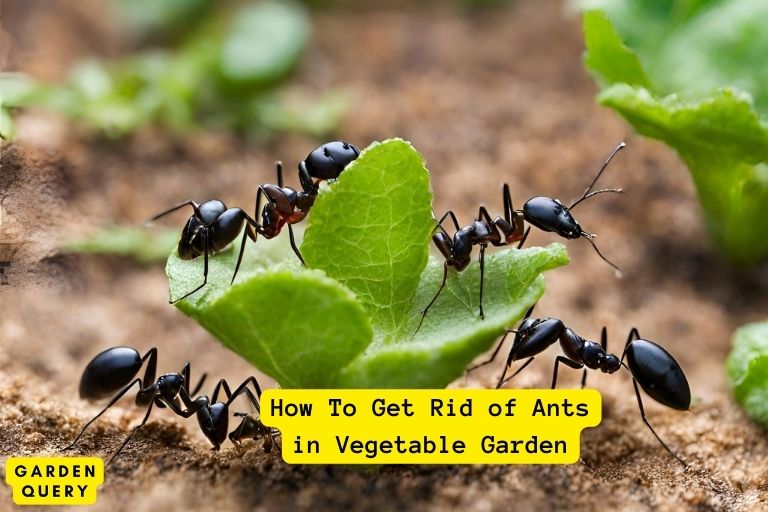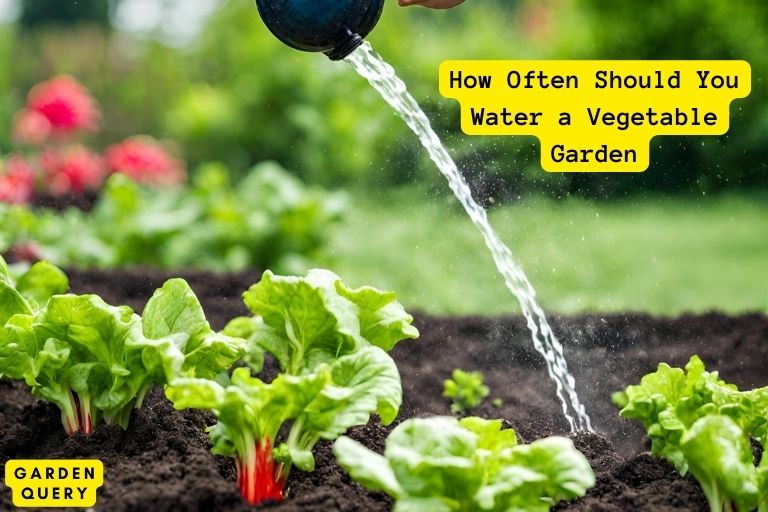Where to Plant Marigolds in Vegetable Garden ?
Marigolds should be strategically planted in and around your vegetable garden to maximize their benefits. They can be planted along the borders of garden beds, interspersed among vegetable plants, or in containers placed near the garden. Their strong scent and bright colors help repel certain pests, attract beneficial insects, and improve overall garden health.
Marigolds are known for their ability to repel nematodes, aphids, whiteflies, and other common garden pests. Their strong scent acts as a natural deterrent, helping to protect your vegetable plants from insect damage.
Additionally, marigolds attract beneficial insects such as ladybugs and hoverflies, which feed on harmful pests like aphids and caterpillars.
By creating a favorable environment for these helpful insects, marigolds contribute to a more balanced and pest-resistant garden ecosystem.
In addition to their pest-repellent properties, marigolds also contribute to soil health. Their root exudates contain compounds that can suppress soil-borne pathogens and nematodes, which can help prevent diseases in your vegetable garden.
Marigolds are also known to enhance the overall aesthetic appeal of the garden with their vibrant blooms, adding color and vibrancy to the vegetable beds.
5 Vegetables: Where to Plant Marigolds in Vegetable Garden
| ✅Vegetable | ✅ Recommended Marigold Varieties |
| ✔ Tomatoes | ✔ French Marigold (Tagetes patula), Pot Marigold (Calendula officinalis) |
| ✔ Cabbage | ✔ African Marigold (Tagetes erecta), French Marigold (Tagetes patula) |
| ✔ Carrots | ✔ Signet Marigold (Tagetes tenuifolia), Mexican Marigold (Tagetes lemmonii) |
| ✔ Peppers | ✔ Pot Marigold (Calendula officinalis), French Marigold (Tagetes patula) |
| ✔ Beans | ✔ African Marigold (Tagetes erecta), Pot Marigold (Calendula officinalis) |
Key Takeaway

Five Facts About: Plant Marigolds in Vegetable Garden
Introduction
Planting marigolds in your vegetable garden can bring a wide range of benefits. Not only do they add a pop of color, but marigolds also serve as natural pest repellents and attract helpful pollinators.
However, to maximize their effectiveness, it’s important to choose the right location for planting marigolds in your vegetable garden. Here are some factors to consider:
Benefits of Planting Marigolds in Vegetable Gardens
– Natural pest control: Marigolds emit a scent that repels many common garden pests like aphids, nematodes, and whiteflies. By planting marigolds near your vegetable crops, you can help protect them from potential damage and reduce the need for chemical pesticides.
– Attracting beneficial insects: Marigold flowers also attract beneficial insects like bees and butterflies, which are essential for pollinating your vegetable plants. Increased pollination can lead to healthier and more abundant harvests.
– Soil improvement: Marigolds have a deep root system that helps improve soil structure and drainage. They also release organic compounds that can suppress the growth of harmful soil
-borne pathogens.
Factors to Consider When Choosing a Location
– Sun exposure: Marigolds thrive in full sun, so choose a location in your vegetable garden that receives at least six to eight hours of direct sunlight per day.
– Soil conditions: Marigolds prefer well
-drained soil with a pH level between 6.0 and 7.0. Avoid planting them in waterlogged or compacted soil, as this can lead to root rot and poor growth.
– Spacing: Give your marigolds enough space to grow and spread. Follow the spacing guidelines provided on the seed packet or plant label to ensure adequate airflow and prevent overcrowding.
– Companion planting: Consider the needs and compatibility of your vegetable plants when deciding where to plant marigolds. Some vegetables, like tomatoes and peppers, are known to benefit from the presence of marigolds, while others may not be as compatible.
By taking these factors into account, you can create an optimal environment for your marigolds and maximize their benefits in your vegetable garden.
Remember to plant marigolds in different areas of your garden each year to prevent the buildup of pests and diseases.
With proper planning and care, your marigolds will not only enhance the beauty of your vegetable garden but also contribute to its overall health and productivity.
Companion Planting with Marigolds
How Marigolds Help with Pest Control
Marigolds are not only beautiful flowers but also great companions for your vegetable garden.
They have many beneficial properties that can help with pest control and improve the overall health of your plants.
1. Natural Pest Repellent: Marigolds emit a strong scent that repels many common garden pests, such as aphids, nematodes, and whiteflies. Planting marigolds near your vegetables can help deter these pests and prevent them from damaging your crops.
2. Trap Cropping: Marigolds also act as trap crops, attracting certain pests away from your main crops. For example, whiteflies are particularly attracted to marigolds, so planting them near vegetables that are prone to whitefly infestations can help protect those crops.
3. Nematode Control: Certain marigold varieties, such as the French marigold (Tagetes patula), produce natural compounds that suppress harmful nematodes in the soil. These microscopic worms can damage the root systems of plants, but planting marigolds can help reduce their populations and improve the overall health of your garden.
To maximize the pest-repellent benefits of marigolds, it’s important to choose the right companion plants.
Best Companion Plants for Marigolds
When choosing companion plants for marigolds, consider the specific pests you want to repel and the needs of your vegetable garden.
Here are some excellent companion plants that pair well with marigolds:
1. Tomatoes: Tomatoes and marigolds make great companions, as marigolds can repel pests like aphids and whiteflies that commonly attack tomato plants.
2. Cabbage Family Plants: Cabbage, broccoli, and other members of the cabbage family benefit from the presence of marigolds, which can repel pests like cabbage worms.
3. Beans: Marigolds can deter bean beetles, which can damage bean plants. Plant marigolds near your bean plants to help keep these pests at bay.
4. Carrots: Carrots and marigolds are a good combination, as marigolds can attract hoverflies, which are natural predators of aphids, a common pest of carrot plants.
5. Squash: Marigolds are beneficial companions for squash plants, as they can repel squash bugs and beetles that can attack squash vines and fruit.
Remember to incorporate marigolds into your garden design strategically. You can intersperse marigolds throughout your vegetable garden or plant them in dedicated rows or clusters near susceptible crops.
Marigolds are not only beautiful additions to your garden but also powerful allies in pest control.
By planting marigolds alongside your vegetables, you can create a healthier and more vibrant garden while reducing the need for chemical pesticides.
Placement of Marigolds in the Vegetable Garden
When it comes to planting marigolds in your vegetable garden, there are a few different placement options to consider.
Marigolds can be beneficial for your vegetable garden in multiple ways, including pest control and adding color to the space. Here are two common ways to incorporate marigolds into your vegetable garden:
Border Planting with Marigolds
One popular way to use marigolds in the vegetable garden is by planting them along the borders of your garden beds. This can create a beautiful and vibrant border while also serving as a natural pest deterrent.
Here are some key points to keep in mind:
- Pest Control: Marigolds have a strong scent that repels many common garden pests such as aphids, nematodes, and whiteflies. Placing them along the borders can help keep these pests away from your vegetables.
- Attracting Beneficial Insects: Marigolds also attract beneficial insects like bees and butterflies, which can help with pollination in your vegetable garden.
- Variety Selection: Choose marigold varieties that are suitable for border planting, such as the French marigold (Tagetes patula) or the signet marigold (Tagetes tenuifolia). These varieties tend to stay compact and make a great border plant.
Interplanting Marigolds Among Vegetables
Another way to incorporate marigolds into your vegetable garden is by interplanting them among your vegetables. This method can help maximize space while providing the same benefits of pest control and adding color.
Here are some tips to consider:
- Companion Planting: Marigolds are considered companions to many common garden vegetables, including tomatoes, peppers, and cucumbers. Their strong scent can repel pests that are attracted to these vegetables.
- Spacing: When interplanting marigolds among vegetables, make sure to give each plant enough space to grow and thrive. Avoid overcrowding, as this can hinder air circulation and promote disease.
- Color Combination: Consider the color of the marigold flowers when interplanting. Opt for colors that complement or contrast with the vegetables you are growing, such as pairing orange marigolds with green leafy vegetables.
It’s important to note that while marigolds can provide benefits to your vegetable garden, they are not a guarantee for pest control.
They work best as part of an integrated pest management strategy that includes proper watering, soil health, and other pest control methods when necessary.
In conclusion, marigolds can be a valuable addition to any vegetable garden.
Whether you choose to border plant them or interplant them among your vegetables, they can provide pest control benefits and add a touch of color to your garden.
Consider experimenting with different placement options to find what works best for your specific garden.
Marigold Varieties for Different Garden Conditions
Marigolds are a popular choice for vegetable gardens as they can provide many benefits such as pest control and adding vibrant color.
The type of marigold you choose will depend on the specific conditions of your garden. Here are some marigold varieties that are suitable for different garden conditions:
Marigold Varieties for Full Sun Gardens
- French Marigolds (Tagetes patula): These compact marigolds are perfect for small spaces in full sun gardens. They come in a variety of colors and have a distinctive scent that can help repel pests like aphids and whiteflies.
- African Marigolds (Tagetes erecta): African marigolds are taller and more upright than French marigolds. They have large, showy flowers and are best suited for larger garden beds in full sun. The bright colors of African marigolds can attract beneficial insects like bees and butterflies.
- Signet Marigolds (Tagetes tenuifolia): Signet marigolds are low-growing and highly aromatic. They are perfect for edging garden beds and containers in full sun. The small, dainty flowers of signet marigolds are edible and can even be used to garnish salads.
Marigold Varieties for Partial Shade
- Lemon Gem Marigolds (Tagetes tenuifolia ‘Lemon Gem’): These marigolds have small, lemon-yellow flowers and can tolerate some shade. They are great for brightening up partially shaded areas of the garden.
Disco Marigolds (Tagetes ‘Disco’): Disco marigolds are a hybrid variety that can tolerate partial shade. They have large, double flowers in vibrant colors and can add a pop of color to shaded garden beds.
- Cottage Red Marigolds (Tagetes patula ‘Cottage Red’): These marigolds have deep red flowers and can tolerate light shade. They are perfect for adding a touch of drama to partially shaded garden areas.
Remember to plant marigolds near your vegetable crops to make the most of their pest-repelling properties. The strong scent of marigolds can help deter pests like nematodes, aphids, and whiteflies.
Check out this link for more information on marigold varieties and their specific growing requirements. In conclusion, choosing the right marigold variety for your vegetable garden will depend on the amount of sunlight your garden receives.
French marigolds and African marigolds thrive in full sun, while Lemon Gem marigolds and Disco marigolds can handle partial shade. Planting marigolds near your vegetables can help deter pests and add beauty to your garden.
Tips for Caring for Marigolds in the Vegetable Garden
Watering and Fertilizing Marigolds
Watering:
- Marigolds prefer well-drained soil, so make sure to water them consistently and avoid overwatering.
- Water the plants at the base, rather than overhead, to prevent moisture-related diseases.
Fertilizing:
- Marigolds are not heavy feeders, but you can give them a gentle boost by applying a balanced, slow-release fertilizer once a month.
- Alternatively, you can use organic matter such as compost or well-rotted manure to enrich the soil before planting.
Avoiding Common Pests and Diseases
Pests:
- Aphids and spider mites are common pests that can attack marigolds. Use insecticidal soap or a strong jet of water to control them.
- Slugs and snails can also be a problem. Create barriers or use organic slug repellents to keep them away.
Diseases:
- Marigolds are generally resistant to many common diseases, but they can be susceptible to fungal diseases such as powdery mildew and root rot.
- To prevent fungal infections, ensure proper air circulation around the plants by spacing them adequately and avoiding overhead watering.
- If you notice signs of disease, remove and destroy the affected plants to prevent further spread.
Remember to place marigolds strategically in your vegetable garden to reap the maximum benefits they offer:
- Plant marigolds near your vegetable crops to deter pests and attract beneficial insects like ladybugs and lacewings.
- Interplant marigolds with tomatoes, peppers, and eggplants to repel nematodes.
- Avoid planting marigolds too close to beans and cabbage, as they may affect their growth.
By following these care tips and strategically placing marigolds in your vegetable garden, you can enjoy their vibrant blooms and reap the benefits they bring to your plants. Happy gardening!
Benefits of Incorporating Marigolds in Vegetable Gardens
Natural Pest Control: Marigolds emit a strong scent that repels many common garden pests, such as aphids, nematodes, and whiteflies. This natural pest control can help protect your vegetable plants from damage and reduce the need for chemical pesticides.
Attracting Beneficial Insects: Not all insects are harmful to your vegetable garden. Marigolds attract beneficial insects like ladybugs and hoverflies, which prey on pests like aphids. These beneficial insects can help maintain a healthy balance in your garden ecosystem.
Improved Soil Health: Marigolds have long taproots that help break up compacted soil, improving drainage and promoting better root growth for neighboring vegetable plants. They also act as a natural soil disinfectant, suppressing certain soil-borne pathogens and diseases.
Enhanced Pollination: The bright and colorful flowers of marigolds attract pollinators like bees and butterflies to your garden. These pollinators play a vital role in the reproduction of many vegetable plants, ensuring better fruit set and higher yields.
Key Considerations for Successful Marigold Planting
Choose the Right Marigold Varieties: There are many marigold varieties available, so select those that are most suitable for your climate and growing conditions. French marigolds (Tagetes patula) are compact and ideal for borders and containers, while African marigolds (Tagetes erecta) are taller and make a statement in garden beds.
Plant in Well-Drained Soil: Marigolds prefer well-drained soil, so choose a location in your vegetable garden that provides good drainage. If you have heavy clay soil, consider adding organic matter like compost or sand to improve drainage.
Provide Adequate Sunlight: Marigolds thrive in full sun, so choose a location in your garden that receives at least 6-8 hours of direct sunlight per day. Insufficient sunlight can lead to leggy growth and reduced flower production.
Water Regularly: While marigolds are relatively drought-tolerant, regular watering is still necessary, especially during dry periods. Water deeply but infrequently, allowing the soil to dry slightly between waterings. Avoid overwatering, as it can lead to root rot and other fungal diseases.
With the right approach, incorporating marigolds into your vegetable garden can be a beneficial and rewarding experience.
Consider the benefits they bring, choose the appropriate varieties, and provide them with the optimal growing conditions. By doing so, you can enhance the health and productivity of both your marigolds and your vegetable plants.
FAQs of Where to Plant Marigolds in Vegetable Garden
Do marigolds attract bees?
While marigolds do attract certain pollinators like bees, their strong scent and vibrant colors are more attractive to other beneficial insects such as ladybugs and hoverflies.
Can marigolds be planted in containers?
Yes, marigolds can be successfully grown in containers, which can be placed near the vegetable garden to provide the same benefits.
How often should I deadhead marigold flowers?
It is recommended to deadhead marigold flowers regularly, removing faded blooms to promote continuous blooming and maintain their pest-repelling properties.
Can marigolds be grown as perennial plants?
Marigolds are typically grown as annuals, but some perennial marigold varieties exist, such as Mexican Marigold (Tagetes lemmonii).
Are marigolds safe for pets?
While marigolds are generally considered non-toxic to pets, it’s always best to prevent pets from ingesting large quantities of any plant material.
Conclusion
Incorporating marigolds into your vegetable garden can offer numerous benefits, from pest control to soil health improvement.
By strategically planting marigolds along garden borders, among vegetable plants, or in containers, you can create a more harmonious and productive garden environment.
Enjoy the vibrant colors, pleasant scent, and added protection that marigolds bring to your vegetable garden.
- Best Therapists In Dallas - February 1, 2024
- Holly Willoughby Husband: Holly Willoughby’s Love Story - January 30, 2024
- Holly Willoughby Dress: 5 Style Secrets and 7 Must-Know Career Milestones - January 30, 2024





